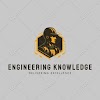Rim and face method:
- The rim and face method, also called dial indicator method, is one of the most common shaft alignment methods. It consists of installing two dial indicators on the shaft of one machine, and positioning them on the rim and face of the coupling of the other machine. By simultaneously rotating both shafts, as well as the dial indicator assembly, and taking measurements at certain points, it is possible to measure the offset of the movable machine shaft in relation to the stationary machine shaft. The rim dial indicator measures the parallel offset, while the face dial indicator measures the angular offset.
- Various different arrangements are possible for the face and rim method, depending on the position of the dial indicators. above the figure most common arrangement, while below the figure shows other possible arrangements.
Vertical alignment:
- To perform the vertical alignment, the dial indicators are set according to a chosen arrangement. In this arrangement, the dial indicators are set to the 6 o’clock position.
- The dial indicators are now at their initial position. To indicate this, the rotating dials on the dial indicators are rotated so that they both indicate 0 mm. The dial indicators are rotated around the shaft axis until they are located at the 12 o’clock position. Both dial indicators should now measure the total indicator reading or TIR for the vertical misalignment. The TIR for both the rim and face dial indicators can then be used to calculate the shim thickness required for vertical alignment using Equations (2-1) and (2-2):
- In these equations, the first term corrects the vertical parallel misalignment. It is equal to the TIR measured by the rim dial indicator divided by two. The second term corrects the vertical angular misalignment. It is obtained through the correspondence of similar triangles.
- Once the shim thickness values for a proper vertical alignment are calculated, shims can be inserted or removed as required under the movable machine feet, as described in Job Sheet 1. If the vertical alignment has been made properly, this should correct the vertical misalignment to within acceptable limits. This can be confirmed by repeating the above vertical alignment procedure.
Horizontal alignment
- The horizontal alignment is very similar to the vertical alignment, but this time on the horizontal plane. It involves setting up the dial indicators according to a chosen arrangement. In this arrangement, the dial indicators are set to the 9 o’clock position
- The dial indicators are now at their initial position. To indicate this, the rotating dials on the dial indicators are rotated so that they both indicate 0 mm. The dial indicators are rotated around the shaft axis until they are located at the 3 o’clock position. Both dial indicators should now measure the total indicator reading or TIR for the horizontal misalignment. The TIR for both the rim and face dial indicators can then be used to calculate the adjustments required at the front and rear motor feet for horizontal alignment using Equations (2-3) and (2-4):
- As you can see, these equations are identical to the equations for calculating the shim thickness required for vertical alignment.
- Once the adjustment for a proper horizontal alignment is calculated, the front and rear of the movable machine can be pushed and pulled as needed, as described in Job Sheet 1. If the horizontal alignment has been made properly, this should correct the horizontal misalignment to within acceptable limits. This can be confirmed by repeating the above horizontal alignment procedure.
- After both the vertical and horizontal alignments are performed, the shafts of the movable machine and the stationary machine are aligned to within acceptable limits

.png)
.png)
.png)
.png)
.png)
.png)
.png)



.jpg)
0 Comments